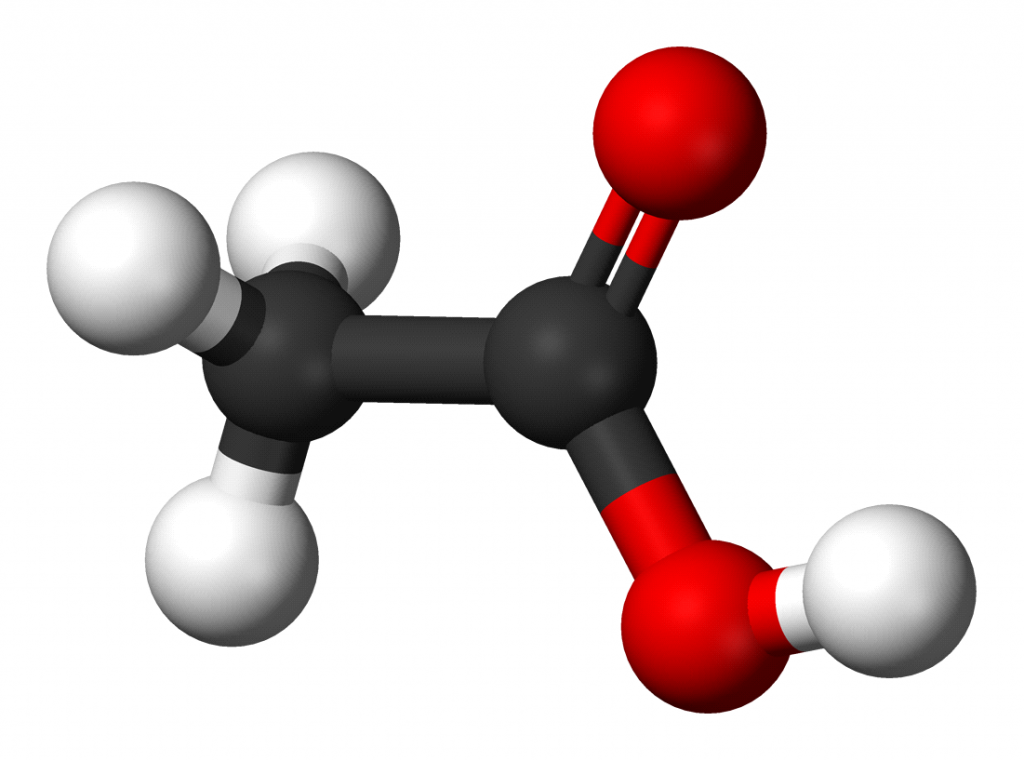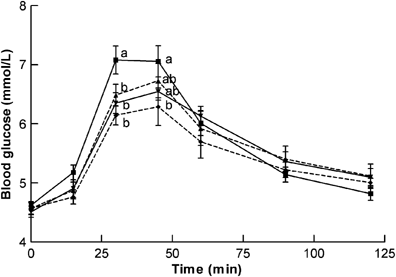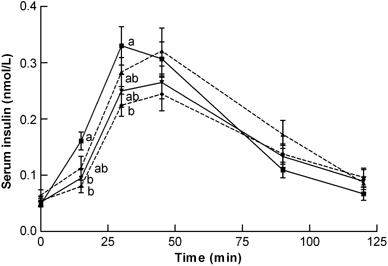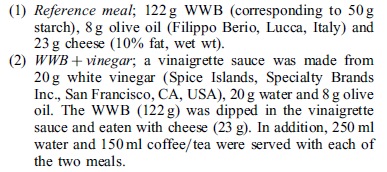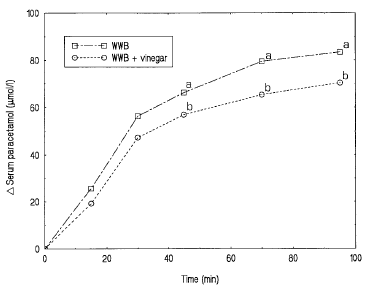1. Whether it’s Balsamic, sherry, red wine, apple cider, or even plain distilled white, vinegar is a great condiment (P<0.05). Try cutting your favorite with a more concentrated one for more fun (be careful, it can burn you; I’d start with 1:20 or 5%).
2. It reduces the glucose and insulin response to a meal.
World’s coolest fatty acid?
Exhibit A: 20 g apple cider vinegar, 40 g water, and 1 tsp saccharine two minutes prior to “a white bagel, butter, and orange juice (87 g total carbohydrates)” (Johnston et al., 2004)
Exhibit B: 18, 23 or 28 g white vinegar (6% acetic acid), which is equivalent to 18, 23 and 28 mmol acetic acid in the respective portions. The highest amount of acetic acid corresponds with approximately 30 ml vinegar of this type. Served immediately prior to 50 g net carbs from bread (Ostman et al., 2005):
They also showed increased satiety:
Further, in real life, this may result in an even further lowering of glucose and insulin by reducing food intake and thus total carb load.
Mechanisms? One study suggested it may be partly due to delayed gastric emptying (Lijeberg et al., 1998)
Gastric emptying:
Other potential mehanisms: “(i) activation of FFAR2 in the enteroendocrine L-cells of the intestinal lumen, leading to increased GLP-1 secretion, (ii) increased AMPk activation, leading to increased FA oxidation and decreased hepatic gluconeogenesis, (iii) lowering of FFAs in circulation, potentially leading to improved insulin sensitivity, (iv) increased blood flow to the peripheral tissues, and (v) increased satiety, leading to lower food intake” (Lim et al., 2016).
It may also alter the ‘biome or suppress SIBO. Maybe.
In any case, it’s delish!
